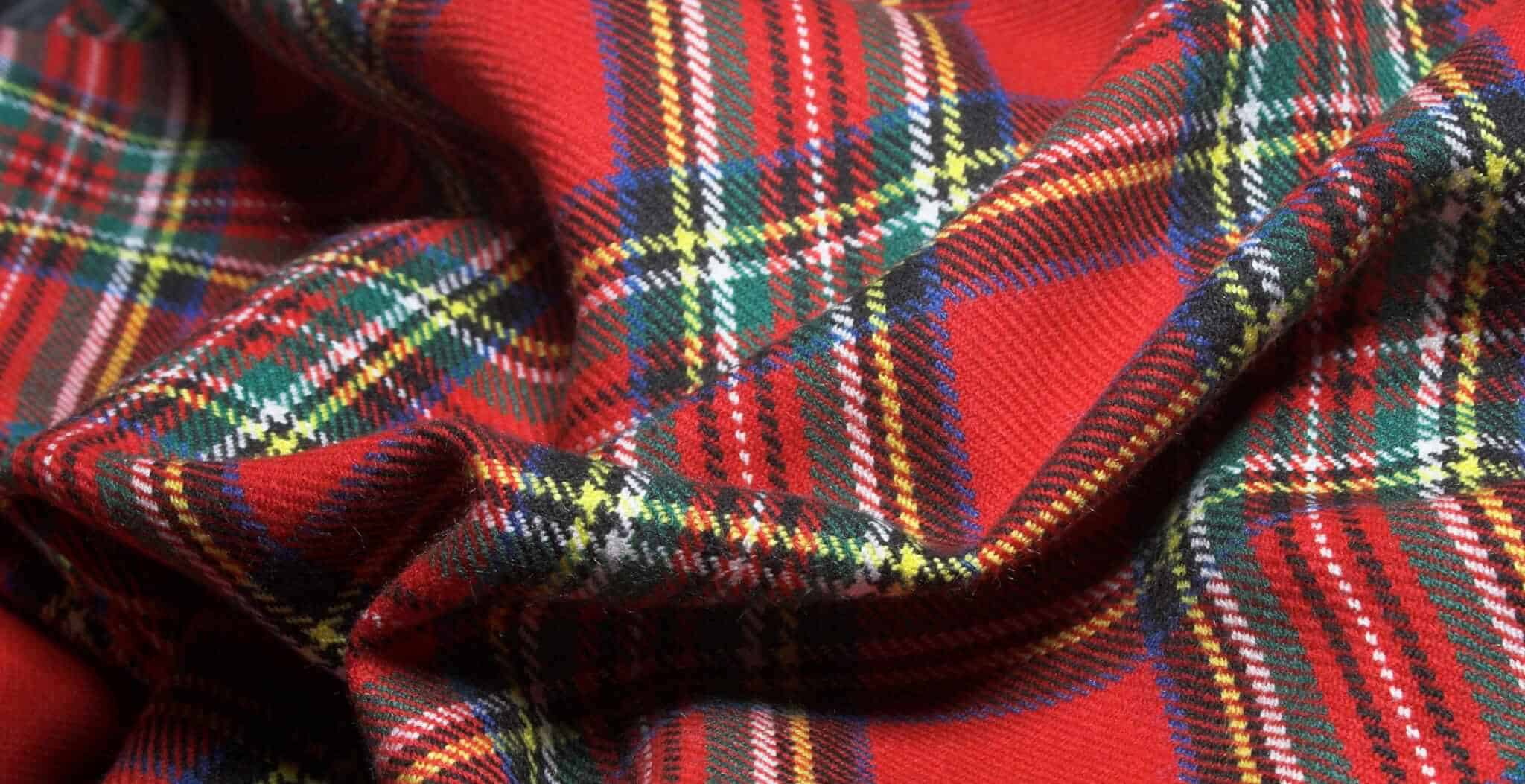How is Tartan Made
Tartan, mostly associated with Scottish culture, is a woven cloth consisting of a criss-cross pattern, known as the sett. Recognised the world over as a symbol of Scottish heritage, Tartan is used to create Scottish kilts, bagpipes, scarfs and other fashion items.
Have you ever wondered how this iconic material is made?
The truth is: it’s a lengthy and highly specialised process, which has remained virtually unchanged for decades. From dyeing the yarn to the crucial weaving process, every stage must be completed with the utmost care and attention to detail.
So, next time you wrap up warm in a luxurious cashmere scarf, or don your kilt for a spot of ceilidh dancing, spare a thought for the expertise that went into producing each one.
Weaving fabric, and especially Tartan, is a painstaking procedure, undertaken only by skilled artisans who have dedicated their lives to this craft. The knowledge these craftspeople build up is passed down through the generations, proving that the art of making Tartan is in their blood.
There are several key steps that go into creating the fabric:
- Winding
- Dyeing
- Warping
- Weaving
- Darning
- Finishing
To give you an insight into the Tartan making process, here’s how it’s done...
First up is winding:
The ecru yarn is wound (ecru is the natural creamy white shade of wool) onto special flexible cones which are used for the dyeing process.
Then for the dyeing:
From a vast archive of yarn colour recipes, experienced craftsmen become adept at maintaining a strong consistency of colours; also matching colours and creating new recipes.
Here is how the dyeing process works:
- The dye colours are applied in water
- Once drained, the yarn is placed into a spin dryer for 12-15 mins
- It is then transferred to a drying oven
- The temperature is kept at 160 degrees to ensure consistent coverage
The yarn is not dried completely, around 10% moisture is kept in, which helps make it more pliable for the next stages of production.
Onto more winding:
The freshly dyed yarn is wound from flexible cones (used in the initial winding stage) onto harder ones. These hard cones are better suited to the next stage in the process.
To reduce wastage, each length is measured as it's wound. The yarn is then either wound onto hard cones ready for weaving, or precisely measured into lengths for warping, depending on the sett of the Tartan, and the total length required.
Then the warping:
Here, the warp yarn pattern of the fabric is constructed. This creates what becomes the width of the fabric and the sett is repeated in sequence right across the full width of the warp.
Cones are banked in colour order, in the correct pattern sequence, and guided from the warp bank onto the warp beam where each pattern repeat of threads is knotted.
The whole process takes place under tension and, once completed, the warp is then wound onto a separate beam so it can be transferred from the warping machine to the loom: the weaving machine.
The all important weaving:
This is where the fabric comes together.
In this part of the process, the warp and the weft (the yarn that goes over and under the warp yarns to form the sett) are interlaced to create a woven fabric.
Each warp yarn is drawn onto the loom through a shaft and a reed. The warp yarns are pulled through the correct shafts; this achieves the correct weave structure across the cloth.
The loom’s shafts lift the warp threads in a set sequence to allow for the weft yarn to be inserted and interlaced. The process is repeated, varying the shafts which are lifted, to create the correct weave structure.
Next, comes the reed, which is the part of the loom which pushes the weft yarn together with the warp to form the fabric.
To help eliminate faults, each warp thread is fitted with a ‘dropper’: a small loop-shaped pin through which the yarn is threaded. If the yarn breaks, the ‘dropper’ drops down and stops the loom.
Different thickness of yarns are used and, by increasing or decreasing the density of the threads, different widths and thicknesses of fabrics can be created. These different thicknesses and widths enable the business to craft everything from traditional kilts to cashmere scarves.
Almost done, next up is darning:
At the beginning of the weaving process, a strip of woven fabric is cut off and inspected by the “darners”. This process ensures each colour and each thread is in the right place, and that the weaving structure is as it should be.
If it’s OK, then the rest of the fabric is woven, this ensures faults are kept to a minimum. If not, the fault must be fixed before the weaving can continue.
At the end of the weaving, each piece of woven fabric is then inspected for quality control purposes.
Now onto finishing:
When the fabric comes out of the loom, it goes through a variety of different processes to achieve the finish required. All fabrics are washed to remove any natural lanolin from the wool yarns and to close up the fabric structure; this is done to make it more appropriate for its intended end use.
The finishing stage can be achieved through other processes such as milling, pressing, brushing or teasing before finally being dried.
By using a variety of finishing processes, a wide range of fabrics can be created for many different uses.
If you want to more about Tartan making contact: customerservices@lancashirekilts.comChampioning Scottish fabric manufacturing - from kilt to catwalk.

